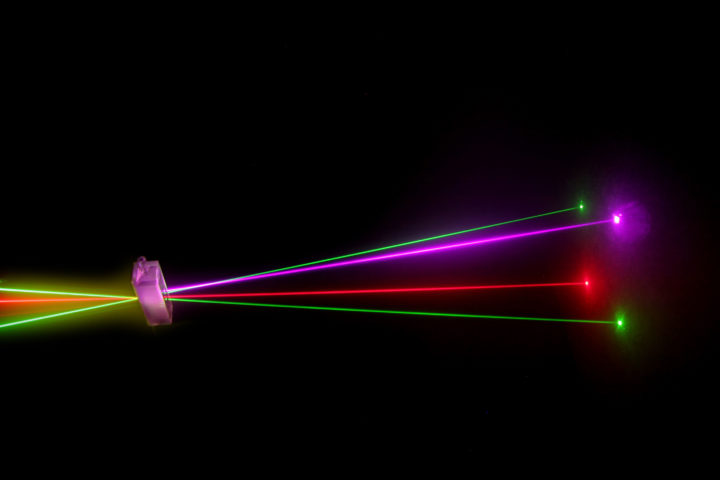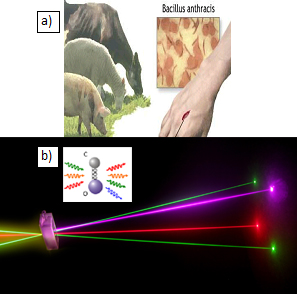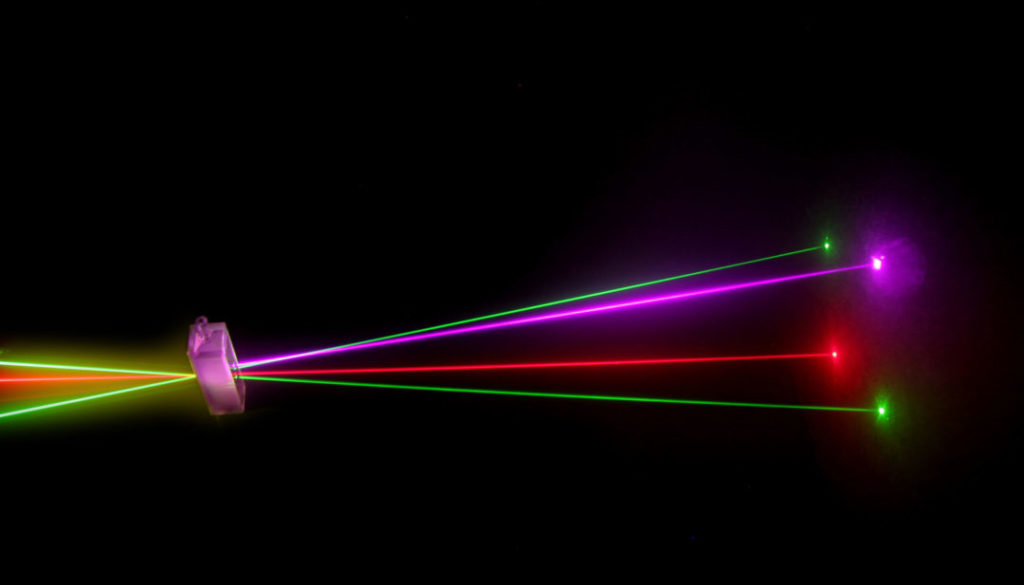Major Award to Bolster Texas A&M Quantum Laser Technology
A three-year, $10.8 million investment by the Texas A&M University System is set to provide a major boost to multidisciplinary quantum biophotonics research across the Texas A&M University campus.
Biophotonics combines biology and photonics, which is the study of quantum units of light called photons. Researchers will draw on sophisticated laser technology developed by the Texas A&M Institute for Quantum Science and Engineering (IQSE) and apply it to an eclectic range of research, from human and crop health to anthrax and cancer detection.
“Our group is world-renowned,” said IQSE director and Texas A&M quantum physicist Marlan Scully. “But we don’t yet have world-class facilities. We’re coming along nicely, but we really needed a shot in the arm, and Chancellor John Sharp has given us that. We’re going to be bringing in world-renowned scientists and connecting them with these global problems.”


The money will allow the College Station campus to invest in cutting-edge laser-based technology and equipment, such as building a Raman spectrometer for cancer detection. In addition, the funding is helping to recruit internationally renowned and interdisciplinary faculty members. Scientists who already have signed on include Roy Glauber, a Harvard University professor who received the 2005 Nobel Prize in Physics, and Wolfgang Schleich, a University of Ulm theoretical physicist whose accolades include membership in the Austrian Academy of Sciences. Both researchers are 2013-14 Fellows with the Texas A&M Institute for Advanced Study (TIAS), which hosts research superstars for short stays in Aggieland.
Scully, a distinguished professor since 1996 and a member of the National Academy of Sciences, said the research conducted at the IQSE is a prime example of Texas A&M’s growing “One Health” movement, which strives for an interdisciplinary approach across departments and colleges to uniting the health of humans, animals, plants and the environment. The institute fuses faculty members from several Texas A&M units and colleges, including science, engineering, liberal arts, agriculture, and veterinary medicine & biomedical sciences.
The funding for this effort came from the Chancellor’s Research Initiative (CRI), which provides one-time funds to Texas A&M University and Prairie View A&M University to recruit and hire faculty members with a track record of developing large federally funded research programs. The $33 million in annual funds for the CRI, which comes from the Available University Fund, is distributed in a process that includes input from Texas A&M’s deans, Provost Karan Watson, President R. Bowen Loftin and A&M System Chancellor John Sharp.
“As we continue to be challenged with doing more with less, it is important for us to find ways to attract world-class researchers without overtaxing our already lean budgets,” Sharp said in 2012, when announcing his plan to ask the Board of Regents to create the fund to attract star scientists. “The CRI seeks to find outstanding researchers who can not only produce amazing work, but also bring in some much-needed funding to support that work.”
Some, but far from all, of the biophotonics research goals for the IQSE award include:
- Increase the speed and reliability of cancer diagnosis techniques. Raman spectroscopy uses lasers to excite the tumor and create scattered light that carries molecular information, a technique that has shown promise in cancer detection and determining tumor boundaries. This technology will be extended to a new technique created at Texas A&M to increase the sensitivity of Raman signals.
- Develop a new technology that will revolutionize biological and chemical sensing — a process long dominated by dogs as the best sensors of explosives and drugs. Texas A&M is creating a prototype device capable of unprecedented, one-part-per-trillion sensitivity for many chemicals under normal atmospheric conditions that could have major implications for homeland security, agriculture, healthcare and environmental sensing.
- Use laser technology developed at Texas A&M to detect crop infection. Cotton, for instance, is affected by several diseases characterized by airborne spores that could be identified spectroscopically by scanning the air directly above crops to pinpoint the infected areas. This technology had previously been used at the IQSE to monitor the atmosphere for traces of gases and pathogens, with broad application in environmental science and national security.
- Build on technology developed at Texas A&M to detect anthrax in the air and in the mail. A team at Texas A&M was the first and only group to detect anthrax in real time. Now, IQSE researchers are proposing to use a technique called Coherent anti-Stokes Raman spectroscopy (CARS) to make the process of detecting endospores easier and more efficient. In addition to anthrax detection, the researchers expect the work to find many applications in chemical sensing and biomedical imaging.
To learn more about the Texas A&M Institute for Quantum Science and Engineering and related research, visit http://iqse.tamu.edu/.
For more information about the Texas A&M Institute for Advanced Study, visit http://tias.tamu.edu/.
# # # # # # # # # #
About 12 Impacts of the 12th Man: 12 Impacts of the 12th Man is an ongoing series throughout the year highlighting the significant contributions of Texas A&M University students, faculty, staff and former students on their community, state, nation and world. To learn more about the series and see additional impacts, visit http://12thman.tamu.edu/.
About Research at Texas A&M University: As one of the world’s leading research institutions, Texas A&M is in the vanguard in making significant contributions to the storehouse of knowledge, including that of science and technology. Research conducted at Texas A&M represents annual expenditures of more than $776 million. That research creates new knowledge that provides basic, fundamental and applied contributions resulting in many cases in economic benefits to the state, nation and world. To learn more, visit http://vpr.tamu.edu.
About the A&M System: The A&M System is one of the largest systems of higher education in the nation, with a budget of $3.8 billion. Through a statewide network of 11 universities, nine agencies, two service units and a comprehensive health science center, the A&M System educates more than 125,000 students and makes more than 22 million additional educational contacts through service and outreach programs each year. Externally funded research expenditures exceed $780 million and help drive the state’s economy.
-aTm-
Contact: Vimal Patel, (979) 845-7246 or vpatel@science.tamu.edu or Marlan Scully, (979) 862-2333 or scully@tamu.edu
The post Major Award to Bolster Texas A&M Quantum Laser Technology appeared first on Texas A&M College of Science.
